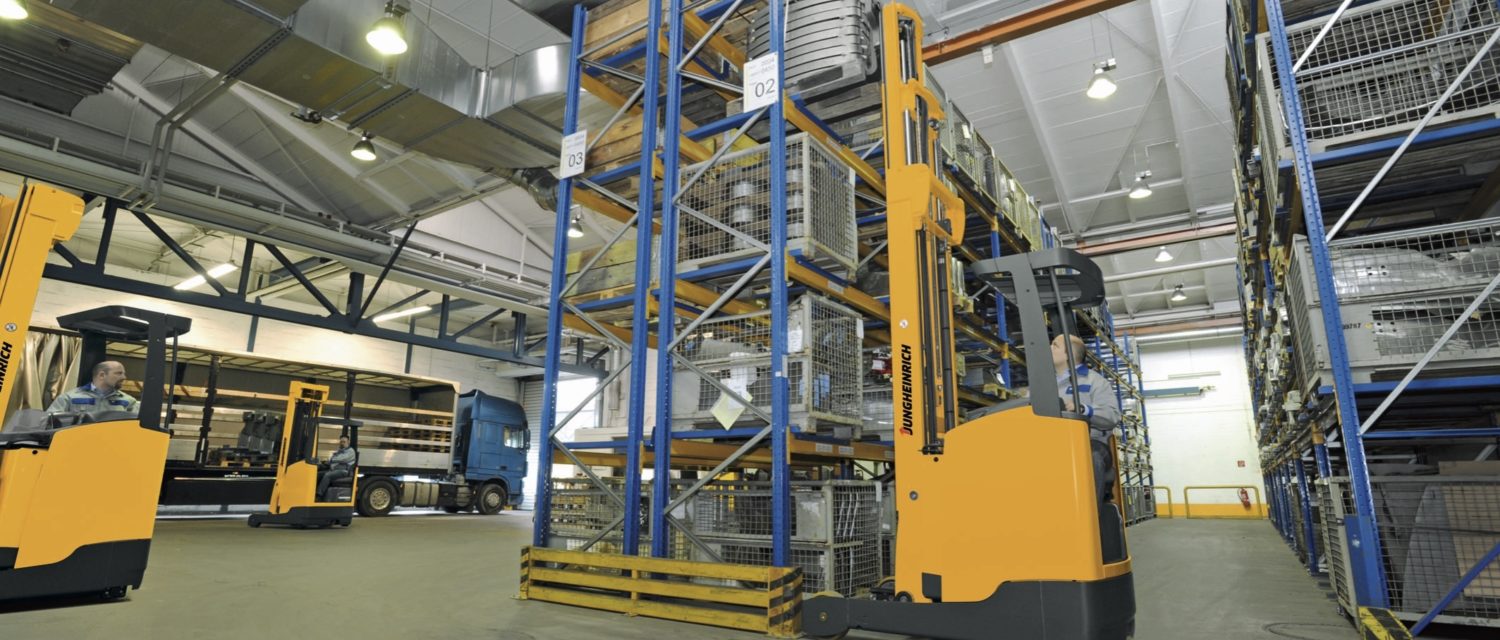Types of Warehouse Racking Systems

Organization is key to running an efficient warehouse. When
orders need to be picked, your people need to be able to access them quickly.
When storing items, you often need to maximize limited space. When loading and
unloading pallets, you need to be able to do so easily with a forklift. And
when handling awkwardly shaped items, you need a way to store them neatly and
compactly.
Warehouse racking systems exist to meet each one of these
needs. The right warehouse racking system can allow you to store all of your
items compactly in the space you have while making them easily accessible for
picking. Here are the most common types of warehouse racking systems from which
you can choose.
Cantilever Warehouse
Racking Systems
Cantilever warehouse racking systems are sturdy systems designed
for long or awkwardly-shaped items of any weight. For example, piping,
furniture, carpet, lumber, and other similarly-shaped items are ideally stored
on cantilever warehouse racking systems.
These systems are perfect for storing oddly-shaped items
because they do not have an upright column facing the aisle. This makes it easy
to store longer pieces of material horizontally, while also allowing those
items to be easily picked when needed. In addition, they have long metal arms
that can be adjusted to fit items of different sizes.
As a result, cantilever warehouse racking systems allow for
easy access and convenient storage of oddly-shaped items. As
a result, they may not be the best choice for storing more traditionally-shaped
pallets. The Jungheinrich ETVQ pairs great with this style of racking. This multi-directional lift truck helps operators navigate very tight aisles while carrying long loads.
Selective Pallet
Warehouse Racking Systems
Versatile, popular, and inexpensive, selective pallet warehouse
racking systems are the most popular type. As a result, selective pallet warehouse
racking systems allow you to store pallets of any shape and size by adjusting
the shelving units to fit.
In addition, selective pallet warehouse racking systems allow
you to easily access your inventory through the use of forklifts. Each pallet
is immediately accessible (rather than being hidden behind other pallets) so
that you can select the inventory you need instead of being forced to choose
the inventory that is at the front of the shelving units.
Selective pallet
warehouse racking systems are also very affordable. However, this system takes
up a great deal of floor space because it requires aisles between shelving
units and it does not constitute efficient storage if you have a great deal of
inventory to store in a relatively small space. This type of system is ideal for multiple sku’s with only one pallet on hand.
Push Back Warehouse
Racking Systems
Push back warehouse racking systems allow for a great deal of
inventory to be stored in a small space. These warehouse racking systems
consist of rollers that allow products to be loaded from the front. Great when used with sku’s with 4-8 pallets on hand at a time, getting dense storage with the same selectivity.
As products are loaded onto the system, the previous product is
pushed back. As a result, these warehouse racking systems allow for the last
item to be unloaded first, and allow the items behind it to be pushed forward
as it is removed. These systems can be custom configured to fit your space, and
can hold items up to five deep.
Push back warehouse racking systems have the advantage of
high-density storage. They also allow for faster loading and unloading of
inventory. These systems also allow for the efficient storage of multiple
products. However, it is a more expensive option and may require more
maintenance than other warehouse racking systems.
Drive-In Warehouse
Racking Systems
As their name implies, drive-in warehouse racking systems allow
forklifts to drive into a bay to load pallets onto the shelving units, rather
than using aisles to give forklifts access to the racking system. The pallets
are loaded front to back and allow for a last in/first out organization of
inventory, as well as for quick loading and unloading of items.
Thanks to this design, as well as the drive-in system’s ability
to store pallets up to six deep, these warehouse racking systems are extremely
space-efficient. They therefore serve as an ideal solution for storing large
inventories of the same product within a smaller space.
Thanks to their space-saving abilities, drive-in warehouse
racking systems also tend to cost less than most other types of dense warehouse
racking systems. Their primary downside is that the last in/first out system
does not work well for items that must be used within a certain time frame
(since older items will not necessarily be picked before newer items) and they
cannot be used efficiently with oddly-shaped items or within a warehouse that must
store many different types of products. It works great when you are looking to store multiple pallets of the same SKU
Warehouse racking systems offer you the chance to efficiently
store your inventory in a manner that works best for your space and your needs.
The system you choose will depend very much upon your particular inventory and
requirements. For example, if you need to store piping, you would choose
cantilever warehouse racking systems, but if you work in the food industry, you
may choose a push back system.
Here at Darr, we offer a variety of warehouse racking
systems to meet your needs. Do not hesitate to reach out for assistance
selecting the best system for you, or for any other warehouse solutions or fleet management help you may need.
